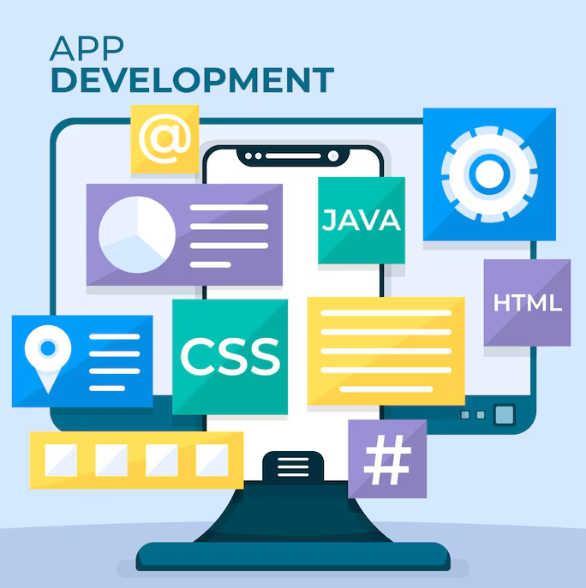Modern web applications are more complex than ever. Developers need to release new features quickly, fix bugs fast, and improve user experience constantly. But how do you do all that without breaking the app for users? The answer lies in two powerful tools: feature flags and remote config.
These tools help developers control which features are turned on or off, without needing to redeploy the entire app. They also allow teams to make changes to the app’s behavior in real time. This makes development safer, faster, and more flexible.
These techniques are becoming essential in the real world, and many full stack developer classes now teach them as part of modern development practices.
What Are Feature Flags?
Feature flags, also known as feature toggles, are a way to turn parts of your app on or off using code. Imagine you’re building a new chat feature in your app. You don’t want all users to see it until it’s fully tested. So, you wrap that part of the code in a feature flag. Only users with the flag turned on can see and use the chat feature.
Feature flags help in many ways:
- Testing new features: Roll out new features to a small group of users first (beta testing).
- Safe deployments: Turn off a feature immediately if something goes wrong.
- A/B testing: Show different versions of a feature to users to see which one performs better.
- Gradual rollout: Release a new feature to 10% of users today, 50% tomorrow, and 100% next week.
With feature flags, you no longer have to worry about a new feature breaking the whole app. You can simply turn it off if something goes wrong.
What Is Remote Config?
Remote config is a tool that lets you to change the behavior or appearance of your app without publishing a new version. It’s like having a control panel that updates your app’s settings instantly.
For example, if you want to change the color of a button, adjust the text on a page, or change the time a popup appears, you can do that with remote config. These settings are stored in the cloud and fetched by your app when needed.
Benefits of remote config include:
- Instant updates: No need to redeploy or wait for app store approvals.
- Personalization: Show different content or styles to different users.
- Quick fixes: Make quick changes to UI or text without touching the codebase.
Remote config is great for marketing teams, product managers, and developers who want to test and adjust app behavior on the fly.
Why They Matter in Full Stack Development
In full stack development, you deal with both the frontend (what users see) and the backend (how data is handled). Feature flags and remote config are useful on both sides.
- Frontend: You can show or hide parts of the user interface based on flags or config settings.
- Backend: You can change how data is processed or which API is used based on configuration.
This is why many students who take a full stack developer course are now learning how to work with these tools. Understanding feature flags and remote config makes you a more flexible and responsible developer.
Real-World Example
Let’s say you work for an e-commerce site. Your team is building a new payment method. You wrap this feature in a flag and test it only with internal staff first. After some time, you expand it to 10% of users. Everything works well, so you go up to 50%, and finally, 100%. If a bug is found at any step, you can quickly turn off the flag without rolling back the whole app.
At the same time, your marketing team wants to test different banner texts. They use remote config to set the text. No code changes are needed. They just edit the text from a dashboard, and the app shows the new message instantly.
Tools That Help
There are many tools that make it easy to add feature flags and remote config to your app. Some popular ones include:
- LaunchDarkly: A platform focused on feature flag management.
- Firebase Remote Config: A Google tool that integrates well with mobile and web apps.
- Split.io: Great for A/B testing and feature rollouts.
- ConfigCat: Simple and developer-friendly for managing flags and configs.
These tools often come with dashboards, analytics, and user targeting, so you can make smart decisions based on data.
How to Use Feature Flags Safely
While feature flags are helpful, they need to be used carefully. Here are some tips:
- Name flags clearly: Use names like newCheckoutFeature instead of flag123.
- Clean up old flags: Remove flags that are no longer used to keep your code clean.
- Limit who can turn flags on or off: Make sure only trusted team members have control.
- Use logging and monitoring: Track how flags are being used and if any errors occur.
Using feature flags the right way means fewer bugs, faster rollouts, and a better experience for your users.
Combining Feature Flags with Remote Config
You don’t have to choose between feature flags and remote config. In fact, many teams use them together. For example:
- Use a feature flag to turn on a new signup form.
- Use remote config to change the wording or layout of the form.
Together, they give you full control over how your app works and looks—without changing the code or deploying a new version.
Skills That Employers Look For
Today’s tech companies want developers who can build apps quickly and safely. They also want team members who can manage experiments, A/B testing, and user rollouts without slowing down the entire team.
Learning how to use feature flags and remote config gives you an edge. It shows that you understand how to build apps that are fast to develop and safe to release.
That’s why more and more full stack developer classes are adding these tools to their lessons. Students who learn these techniques become more confident and capable when they enter the workforce.
Summary
Feature flags and remote config are powerful tools that help full stack developers manage changes in their applications. They make it easier to test, release, and personalize features without big risks or long delays. By adding these techniques to your skill set, you can build better apps and become a more valuable developer.
Whether you’re learning on your own or through a full stack developer course, make sure you explore these tools. They will help you move faster, avoid problems, and deliver a better experience to your users.
In a world where speed, safety, and user satisfaction matter more than ever, feature flags and remote config are tools every full stack developer should know.
Contact Us:
Name: ExcelR – Full Stack Developer Course in Hyderabad
Address: Unispace Building, 4th-floor Plot No.47 48,49, 2, Street Number 1, Patrika Nagar, Madhapur, Hyderabad, Telangana 500081
Phone: 087924 83183

